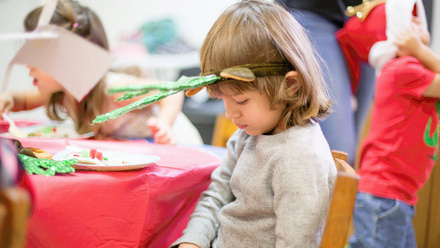How to use visual aids to promote inclusive education
We rely more on what we see than it might first appear. From the road signs that keep us safe, to instantly recognisable logos on a trip to the supermarket, visual aids are all around us and part of our everyday life.
Visual aids are a popular tool within educational settings, from early education and care through to adult learning provisions, used to facilitate communication, developing understanding and promote independence.
For children with special educational needs, this universal provision is something that can facilitate communication and, for some children, be the difference between being heard, or feeling silenced.
This learning workout looks at some of the ways we can use visual aids to support learning and development for children with additional educational needs. But, regardless of individual needs, using visual aids is something we can implement into every learning environment to support everyone.
What are visual aids?
Visual aids are a common form of communication support that are used to enhance understanding and encourage participation. Having a visual aspect to our interactions with others is helpful for everyone and is often done without us even thinking about it! Gestures and signals that we make without thinking when talking with others help to ground our communication into context and enhance meaning.
Visual aids can come in a variety of forms, varying from purpose-made resources to natural actions we take for granted in how we communicate:
- objects of reference
- symbols
- pictures or photographs
- digital displays, including videos and moving images
- visually written-down keywords
- coloured indicators, such as lights or cards.
As early education and care providers, we must endeavour to offer equal opportunities to all children in our care, creating valuable learning opportunities for all children to access and thrive in.
Using visual aids within practice doesn’t just facilitate communication for all children in the environment but, for children with additional communication needs, can provide a new sense of self and belonging within the provision.
How to use visual aids
Making choices
Using pictures, photos and real-life objects can be used to indicate options to young children who may struggle with decision-making independently. Using visual aids can be useful to attach a tangible meaning to the questions you are asking.
- When asking children to choose between items for snack, hold an example of each one to demonstrate what is on to be decided between.
Explaining clearly
Visual cards and images can be combined with calendars and timetables to create a visual plan to outline what is to be expected within routine. Children with communication and interaction needs rely on routines for a dependable and predictable sense of the day so it’s important to consider this when communicating changes to the day. Now/next boards magnify these transitions to clearly identify what is about to happen and what to expect soon to further support full sense of understanding.
- Use collaborative time, such as circle times, to establish the routine for the day as well as 1-1 interactions to further support children who would benefit from more direct explanation within a busy early education and care environment.
Supporting meaning
For children with sensory needs, such as hearing impairment, the words we say can be misunderstood easily. For children with processing needs, it can be difficult to comprehend what is being said when words disappear after being spoken. Using visual aids to identify key words within spoken language can prompt children to identify meaning, as well as supporting their understanding when focus turns to extending their vocabulary.
- Visual aids can be used to demonstrate key vocabulary and introduce the language but also to formatively assess knowledge, asking children to act upon questions to identify keywords through selecting visual aids.
Providing independence
Children with additional needs are often in receipt of targeted and specialist support that sometimes results in some independence being taken away from their daily routine. Using visual aids such as pictures on drawer labels, transparent boxes or accessible items like grips on pencils give back a sense of independence, allowing children to take control of their own environment.
- Use open questions such as “what would you like to do today?” to give children a sense of autonomy within the setting. These questions can be used in conjunction with visual aids to offer support for communication needs and wants.
Key takeaways
Visual aids can be used in a variety of ways to support children in their communication, understanding and general access to the learning environment. Using visual aids does not hinder communication or create reluctance to talk but quite the opposite – it promotes children’s confidence in their ability and a chance to be truly heard.
- Ensure all visual aids are high contrast and large enough to be seen easily.
- Keep visual aids consistent (such as using the same images or fonts) for the same word across all provisions.
- Make them easy to access, such as by using portable now/next boards, mini timetables and lanyards for keywords.
- Create visual aids for a variety of subjects to ensure that every aspect of learning can be supported visually.
Why not explore more communication advice for working with an approach to inclusive education in our member resources?
Reflection
Think about your current setting and how visual aids are used throughout. What could be added to the environment to increase their use? Is there an area where it would be difficult to implement visual supports or any additional support needed for staff to use them? Why?




